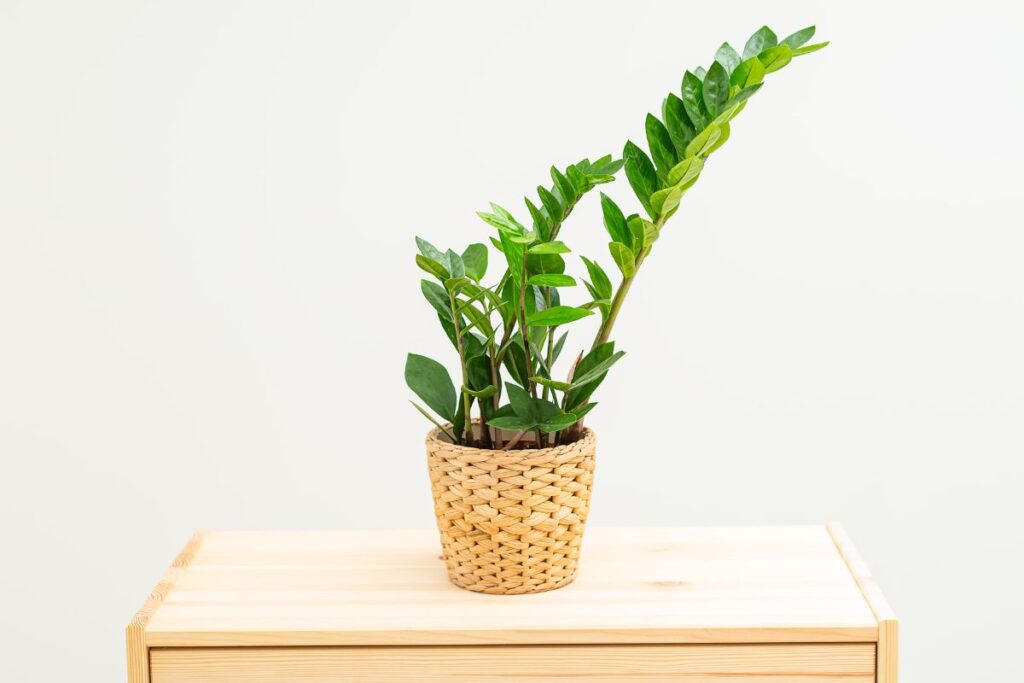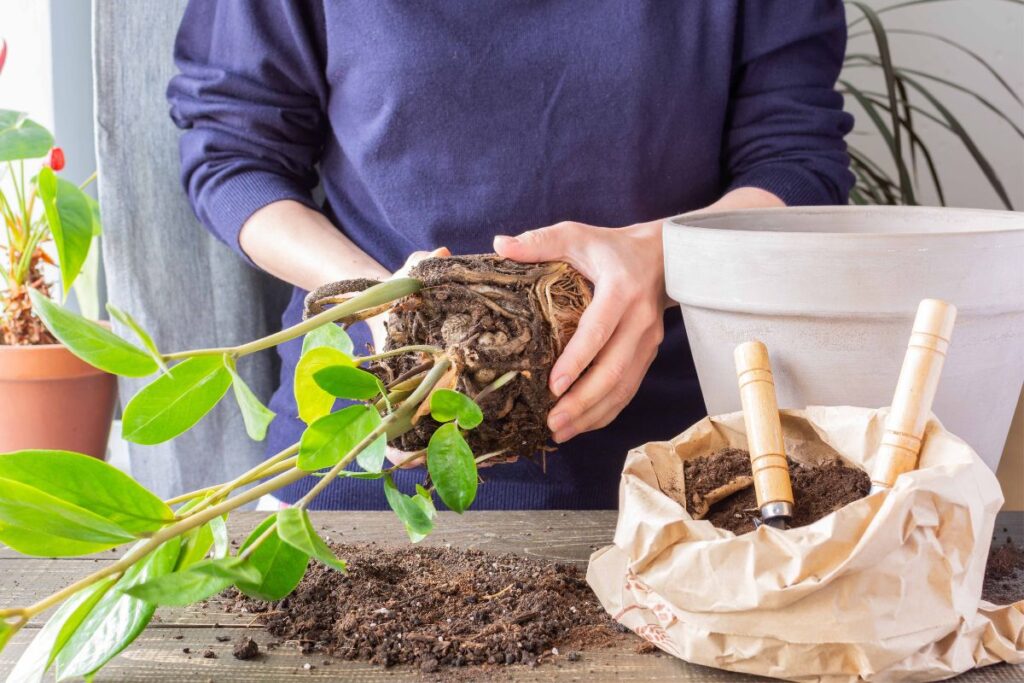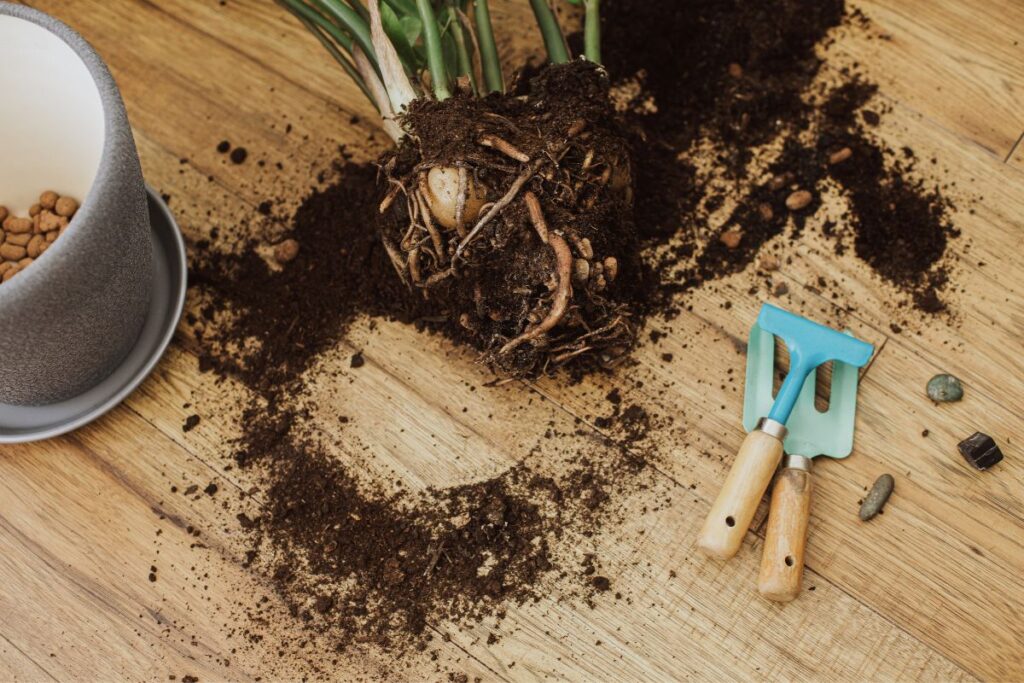Do ZZ plants like to be root bound? This is a question that many plant owners have, especially those who are just starting out with houseplants. Root-bound plants can cause stress and damage to the plant if not managed properly, so it’s important to know what your particular species needs in order to stay healthy and happy.
In this article, we’ll explore the answer to this commonly asked question: do ZZ plants prefer being root-bound or having more space? We’ll look at how they respond when kept in their pots for extended periods of time, as well as some tips on how to tell if you should repot them. By the end of this article, you’ll have all the information you need about keeping your ZZ plant safe and thriving!

Contents
Do ZZ Plants Like To Be Root Bound?
ZZ plants, also known as Zamioculcas zamiifolia, are one of those houseplants that actually prefer to be root bound. Being root-bound means that the plant’s roots have filled up the entire pot, leaving little or no room for further growth. This unique preference is mainly due to their native habitat and natural growth habits.
In their natural environment, ZZ plants grow in rocky, arid soil with limited space for their roots to spread out. Their thick, tuberous roots act as water storage, enabling them to tolerate periods of drought. When grown in pots, they tend to thrive when their roots are confined, as it mimics their natural growing conditions.
Allowing the ZZ plant to be slightly root-bound can also help prevent overwatering, as the limited space and dense root system help to absorb and use water more efficiently. However, it’s essential to ensure that the plant doesn’t become too root bound, as this can eventually lead to stunted growth and other health issues.
Repotting the ZZ plant every two to three years or when roots start growing out of the pot’s drainage holes should help maintain a healthy balance. Overall, being root-bound can be beneficial for a ZZ plant, allowing it to grow happily while also simplifying the care process for plant owners.
How To Know If My ZZ Plant Needs Repotting?

To determine if your ZZ plant (Zamioculcas zamiifolia) needs repotting, you can look for a few key signs that indicate it’s time to give your plant a new home. One of the most obvious signs that your ZZ plant needs repotting is if you notice roots growing out of the drainage holes at the bottom of the pot or if the roots have become tightly bound and are circling the inside of the container. If the root bound is severe, it can restrict the plant’s growth and cause stress to the plant.
Another sign to look for is the overall growth rate and health of your ZZ plant. If the plant’s growth has slowed down significantly, the leaves are turning yellow, or the plant is losing leaves, it could be a sign that it needs repotting. The plant may be struggling to get enough nutrients from the soil, or the roots may have filled the pot, leaving little room for further growth.
Additionally, if the soil dries out too quickly after watering or if water runs straight through the pot without being absorbed, this could indicate that the plant’s roots have taken up most of the space in the pot, and it’s time to move it to a larger container.
How To Repot A ZZ Plant

Repotting a ZZ plant is a relatively simple process that can help to promote its growth and overall health. It is essential to repot the plant when it outgrows its existing container or when the soil starts to break down, generally every two to three years. Repotting allows the plant to have more space for its roots to grow and provides fresh soil with better nutrients.
Once you’ve determined your ZZ plant needs repotting, it’s time to take action. To repot a ZZ plant, first, choose an appropriate time, ideally during the early spring when the plant is in its active growing season. Select a new pot that is about 2 inches larger in diameter than the current pot, ensuring that it has drainage holes. Prepare a well-draining, good-quality potting mix; you can either purchase a pre-made mix or create your own by combining equal parts of peat moss, perlite, and potting soil.
Before removing the ZZ plant from its current pot, water it thoroughly to help loosen the roots and make the process easier. Carefully remove the plant from its container, gently shaking off any excess soil from the roots. Inspect the root system for any signs of rot or damage, and trim away any unhealthy roots using sterilized pruning shears.
Place a layer of fresh potting mix at the bottom of the new pot, adjusting the thickness so that the top of the root ball will sit about an inch below the pot’s rim. Position the ZZ plant in the center of the pot, spreading the roots out evenly. Fill in the gaps around the roots with more potting mix, pressing it down gently to eliminate air pockets. Ensure that the plant is sitting at the same depth as it was in the previous pot.
Water the repotted ZZ plant thoroughly, allowing any excess water to drain out of the bottom. Place the plant in a location with bright, indirect light, and resume its normal care routine. The ZZ plant may take a few weeks to adjust to its new pot, but with proper care, it will continue to thrive and grow in its new home.
Conclusion
In conclusion, the answer to the question of whether or not ZZ plants like to be root bound is: it depends. They can survive a certain amount of time in that state, but eventually, they need more space for their roots and will begin to suffer if repotting isn’t done in a timely manner. It’s important to keep an eye on your plant and watch out for signs that it needs more room. If you do notice any changes, make sure to repot your ZZ plant as soon as possible! With proper care, you’ll have a happy and healthy houseplant for years to come.
